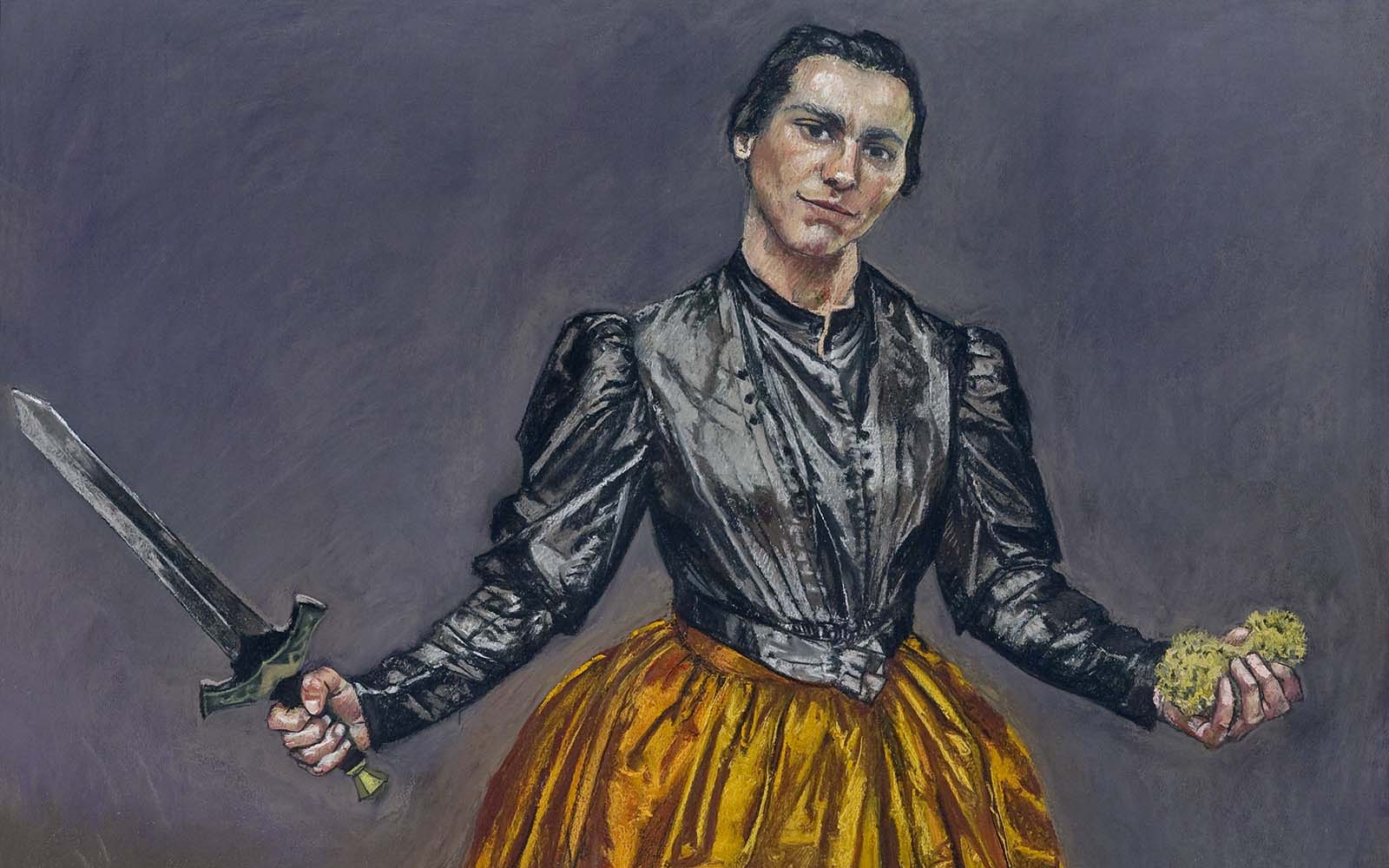Paula Rego (1935-2022)

The Board of Trustees would recall the historical connection to the Gulbenkian Foundation of “an unparalleled artist in the international panorama who leaves behind an unforgettable legacy,” while also expressing “pride at the recent acquisition of her iconic painting The Angel”. In February, the CAM collection was strengthened by the purchase of two works – The Angel and The Turkish Bath – which turned the Foundation into the private institution with the largest and most significant collection of this artists and made up of 37 works, including paintings, sketches and engravings. At the time, Paula Rego stated her “great happiness” at knowing that two of her most important works “would be going to live at the Gulbenkian”. A sense of gratitude that ensured she always made a point of highlighting how she was a former Foundation grant holder.
The death of Paula Rego occurs at a decisive stage in her international consecration following the enormous media attention around the success of her exhibitions in Paris, (Orangerie, 2018/19), London (Tate Britain, 2021) and at the Kunstmuseum den Haag (2021/22). A sample of her work was recently unveiled at the Picasso Malaga Museum and with a special representation on display at the Venice Biennial. Her work currently also features in the exhibition “Everything that I Want. Portuguese Artists between 1900 and 2020”, in Tours, France.
United by the coherence and consistency of her themes and the unmistakeable marks of her identity, the work of Paula Rego – ranging from the late 1950s when still a student at the Slade School through to contemporary times -, has spanned a compulsive need to undergo formal renewal with various identifiable and temporally defined cycles.
This highlights her tireless search for themes that lead to the representation of human drama (or comedy), in a relentless scrutiny of the complex ethical and moral nature. Nobody was better able than Paula Rego to clarify, with a disarming simplicity, the thematic scope of her works which, throughout the multiple forms that they took, has nevertheless been invariable as may be conveyed in her own words: “Ordering people. Obedience. Subversion. Doing good to bad people, doing harm to good people. Power. Inequalities between the sexes. Men command women in general. Women, they sometimes command but that is in another way. The relationship between the sexes. That’s it. Nothing else is needed.” Her approach is always ethical, pedagogic and with a transformative purpose in terms of awareness and behaviours.
Born in Lisbon on 26 January 1935, Paula Rego studied in London at the Slade School of Art between 1952 and 1956. She married the British painter Victor Willing in 1956. She featured in the 2nd Arts Exhibition (1961) of the Gulbenkian Foundation and, in 1961/62, received a Foundation study scholarship. She took up permanent residence in London in 1976. In 1988, CAM organised a retrospective of her work and she was nominated a Senior Fellow of the Royal College of Art in the same year before she became the first artist to use the title of National Gallery Associate in 1990. The Gulbenkian Foundation Delegation in France hosted an exhibition of her works in 2012.
She was awarded the Portuguese honours of Grand Officer in the Military Order of Sant’Iago da Espada and Great Cross in the Military Order of Sant’Iago da Espada, among other such awards.
